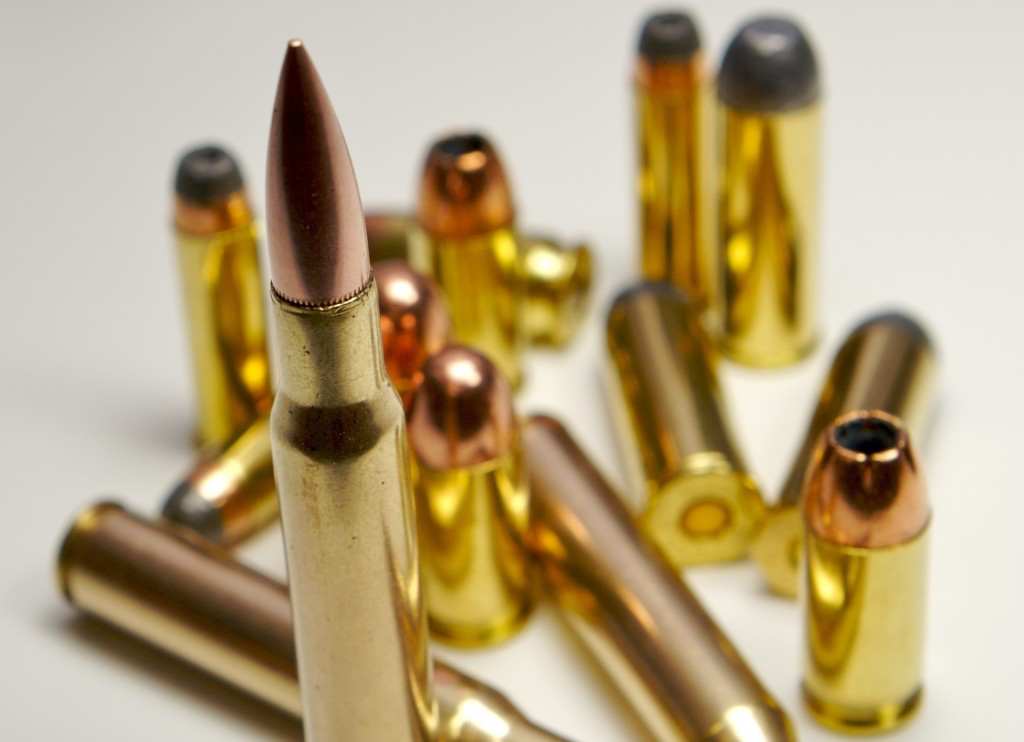We live in an era of dramatic advances in ammunition technology. Consider, for example, the 9mm, once considered an ineffective round. With the help of modern ballistic experts, the 9mm has now eclipsed 40 and 45 in popularity.
Like the sea change of acceptance with 9mm, another old, but advancing, technology is set to rock the world of self-defense and hunting: frangible ammunition.
What is frangible ammo? It’s a round that looks like any other, but the bullet is made of compressed powder. The composition of that powder usually includes copper as well as other ingredients, some of which are manufacturer-specific. Tungsten is among the substances used by one manufacturer, Allegiance Ammunition. Other companies have been less forthcoming about what’s in their secret sauce.
Historically, frangible ammo was pressed into round- or flat-nose bullets for use in “shoot houses,” structures made of concrete or railroad ties for the purpose of training, usually for advanced police and military work. These bullets are made to disintegrate on impact with any surface that’s harder than they are. For years, frangible has allowed folks to add the realism of live indoor fire to their training.
The Self-Defense Weapon That Doesn’t Require A Firearms License!
But now, “frange” is breaking out of the shoot house. New formulations and formats — think hollow point — are now available for anyone to purchase. Companies like SinterFire are showing off gel block tests that show what these rounds are capable of. In short, specialized frangible loads produce massive wound channels that spell “stopping power” for game or violent criminal actors.
Story continues below video
Why bother switching from your regular hollow point load to frangible? Here are three reasons:
Cost – Current prices for frange pistol ammunition hovers around that of factory-new FMJ ammunition, and less than premium HP.
Performance – Frange delivers a real wallop on most targets. I’ve tried it on watermelons, concrete blocks, and 2x4s. Entrance points look normal, but melons are turned to mush inside; blocks were cut to pieces, and the wood was heavily splintered on exit.
Safety – What frangible won’t do is punch through concrete or heavy metal. For civilians living in homes or communities where concrete is present, that means an errant shot won’t ricochet and wreak unwanted destruction. For new shooters, it also means you can get up close and personal to steel targets — even with rifle ammunition — and suffer no dangerous bullet jacket backsplash as is common with traditional ammo. For folks who enjoy steel shooting at any distance, it offers massive risk reduction. For people whose self-protection milieu includes concrete, which is most of us, it should be considered a more responsible choice where ricochet potential is concerned.
While I’ve not personally used frangible for hunting game, accounts are emerging of stunning performance. From hogs to elk, it seems frangible is on the cusp of giving the HP market some serious competition.
The light-bulb moment for me came one night when my dogs’ bark alerted me to the presence of an unwanted visitor. A large diamondback rattlesnake had decided to occupy the rear exit of my home, where there’s a door made of glass, set on a concrete porch. Having a recent wrist injury, I found myself unable to swing a shovel to save my dogs and self from this very real threat.
The thought of firing a 12 gauge to eliminate the snake was the natural next development, but I didn’t want to risk breaking glass or having shot bounce back onto myself. Then I remembered some frange ammo that I’d used to test on watermelons and other stuff. Perfect! I loaded up my pistol, and with one crack, the snake lay in three pieces. Zero property damage had been done, save for some blood to wash off the concrete.
It’s my opinion that frangible has a place in the civilian arsenal — definitely for self-protection and possibly for hunting. There are virtually no occasions when a civilian would be called upon to fire through a car door or hull of a steel boat, places where frangible is likely to fail. There are, conversely, a myriad of circumstances in which a civilian wants to avoid damaging effects to property or life from a round or shrapnel that’s deflected from concrete or steel.
As for function, frangible has cycled dependably in my 9mm and 40 S&W striker-fired pistols, as well as in many associates’ semiautos. I’ve seen it perform perfectly in .223-caliber AR15s. My only experience witnessing its use in revolvers leads me to lend a word of caution to check with your revolver’s manufacturer before loading up your wheelgun with frange. The function issues I witnessed may or may not have been typical.
When I asked the owner of Lucky Gunner, a national ammunition retailer, about sales patterns for various ammo types, he responded, “I don’t know why frangible doesn’t get more love.” I can’t agree more. There’s a lot to be gained by the responsible armed citizen when frangible is added to one’s ammo selection.
Have you ever fired frange ammo? Share your thoughts on it in the section below:
 Off The Grid News Better Ideas For Off The Grid Living
Off The Grid News Better Ideas For Off The Grid Living




